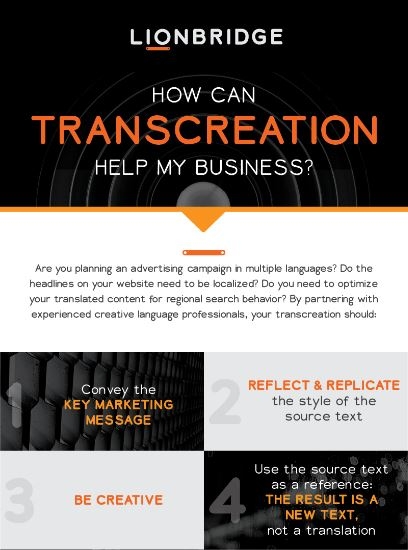- WHAT WE DO
Additional Services

- Industries

Case Study: Multilingual Retail Marketing
New AI Content Creation Solutions for a Sports and Apparel Giant

- RESOURCES

- WHO WE ARE

What We Do Home
Generative AI
- AI Translation Services
- Content Remix
AI Data Services
- Aurora AI Studio™
Machine Translation
- MT Tracker
Instant Interpreter
Customer Onboarding
Translation Service Models
Content Services
- Technical Writing
- Training & eLearning
- Financial Reports
- Digital Marketing
- SEO & Content Optimization
Translation Services
- Video Localization
- Software Localization
- Website Localization
- Translation for Regulated Companies
- Interpretation
- Instant Interpreter
- Live Events
- Language Quality Services
Testing Services
- Functional QA & Testing
- Compatibility Testing
- Interoperability Testing
- Performance Testing
- Accessibility Testing
- UX/CX Testing
Industries Home
Life Sciences Translations
- Pharmaceutical Translations
- Clinical Trial Translations
- Regulatory Translations
- Post-Approval Translations
- Corporate Pharma Translations
- Medical Device Language Services
- Validation and Clinical
- Regulatory Translations
- Post-Authorization Translations
- Corporate Medical Device Translations
- COA Translation Services
Banking & Finance
Retail
Luxury
E-Commerce
Games
Automotive
Consumer Packaged Goods
Technology
Industrial Manufacturing
Legal Services
Travel & Hospitality
Insights
- Blog Posts
- Case Studies
- Whitepapers
- Solution Briefs
- Infographics
- eBooks
- Videos
Webinars
Lionbridge Knowledge Hubs
- Positive Patient Outcomes
- Modern Clinical Trial Solutions
- Patient Engagement
- AI Thought Leadership
SELECT LANGUAGE:
To advertise your company's products or services, you have created engaging, effective messaging to connect with your target audience. But without transcreation services, delivering that message can be trickier than you think—even in your own language. Coop, a major Swiss supermarket chain, learned this the hard way a few years ago, when it led its summer ad campaign with the question, “Chame das grille?" The word “grille” is derived from the verb "grillen" in High German as spoken in Germany, but in Switzerland the local Swiss German term is "grilliere." Using the High German word caused an uproar among Coop's Swiss customers —and prompted months of cross-border debate (in German only) about linguistic norms.

Coop’s advertisement which caused the language dispute (in German only) by using “grillen” instead of “grillieren”.
In this example, only one language (German) is involved. Just imagine how many potential linguistic and cultural blunders a company—your company—has to watch out for when creating messages in multiple languages. That's where transcreation comes in.
What is transcreation?
Transcreation is the process of adapting a message from one language to make it culturally appropriate for another audience. Rather than rigid, word-for-word translation, the goal of transcreation is to duplicate the intent, context, style and tone and emotion of the original in an entirely new text that's written specifically for a particular market. The term “transcreation” combines two words: “Translation,” the rendering of text in another language, and “creation,” the act of producing something new. This highly creative process is provided with the support of language professionals who are experts in the linguistic and cultural features of your target market, and are very familiar with your industry.
What kind of content needs transcreation?
When rendering hard facts in another language, you don’t need transcreation. A stock report, for instance, tells readers about the trend of a stock’s price and what’s been happening at the company to elicit such a trend. This material is factual, non-emotional: what you need is a translator with specialized knowledge of your industry. That's very different from more evocative content, including:
- slogans
- advertisements and billboards
- headlines
- TV commercials
- film and book titles
- e-screens
- banners
- claims
- special expressions
- content which is trying to connect emotionally to users
- blog content which is written in conversational format
- content that asks or answers questions (e.g. for voice search)

These kinds of messages communicate through emotion, tone and style and they often play with language and images. Here, cultural and linguistic nuances are especially important and literal translations rarely work. This is where you need a transcreation service.
How do I get a transcreation?
The more detailed the information you provide, the more accurate the result will be in the target language. In addition to the source and target language, your language service provider will need to know some specific things about the transcreation you want. This includes answers to the following questions:
- What kind of a text is it? Slogan? Book title? TV commercial? etc.
- What is the context of the transcreation? A campaign for a new product? Website for a new market? etc.
- What is the key message you want to convey to your audience?
- What is the tonality and style in which you want to communicate? Formal? Colloquial? Humorous? etc.
- In what format do you want the target text to be delivered? Are there restrictions on text length?
- Is there any reference material available? For example, catch phrases, terminology, language and style guidelines?

If the transcreation is for a company campaign and you have formulated a creative brief, please forward the brief to your language service provider. This gives the language professionals important information at a glance. If other information is still required for the transcreation, your language service provider will ask you for it.
How does transcreation work at Lionbridge?
As soon as we have your source text and all the information we need for the transcreation, our creative language professionals get to work. Not only are they experts in the language and culture of your target market, but they're also familiar with your industry and drive every phase of the transcreation process:
- They analyze the content in the original language and the requirements of the transcreation.
- They determine the extent to which the original text and the text to be created differ from one another—in terms of language, culture and target group.
- They may compose a version or multiple versions of the text in the target language which have the same effect on the audience in the target market and trigger the same response as the original text in the original market.
- They get your feedback on these versions and decide on any revisions with you.
- They deliver the definitive version to you in the target language — one text that is optimally geared to your target group and target market.
It is very important to understand the purpose of transcreation and to understand how companies measure transcreation quality.
How can transcreation help my business?
Use Case 1: Transcreate headlines for better in-market comprehension

When your source text contains idioms or phrases that are not familiar in a new market, we recommend transcreation to make your message resonate. For example, when Lionbridge launched an 8-part blog series entitled "Going Global 101," we knew that the term "101"—American slang for an entry-level or introductory course—would not be familiar to international readers. When preparing the series for German readers, the best word-for-word translation was “Globale Präsenz 101” (literally “Global Presence 101”). Instead, our creative language professionals recommended the transcreation "Internationalisierung leicht gemacht" or "Internationalization Made Easy," a much more faithful rendition of the intended message.
Use Case 2: Transcreate web copy for better in-market SEO results

To improve in-market search rankings, we recommend a mix of transcreation and content ideation for your web content copy in regional markets. With the advent of Google’s algorithm BERT, natural-language search queries for longer phrases and questions will increase. A translation may miss key search phrases and questions used in-market, if it stays too close to the source text. In these cases, use transcreation to add key phrases from SEO analysis in an intelligent and coherent way to your web copy. Read more in this blog post on content creation for Multilingual SEO in 2020.
Transcreation checklist
Are you planning an advertising campaign in multiple languages? Do the headlines on your website need to be localized? Do you need to optimize your translated content for regional search behavior? By partnering with experienced creative language professionals, your transcreation should:
- Convey the key marketing message of the source text
- Reflect and replicate the style of the source text
- Be creative, get as far away as needed from the source text
- Use the source text as a reference for the content of the target text: the result is a new text, not a translation
- Ensure the effect of the target text mirrors that of the source text
- Adapt the message to the local and cultural context
- Exercise care in the use of images
- Pay attention to terminology and keywords
- Address the target audience appropriately (tone, choice of expressions)
Ready to make transcreation part of your global messaging strategy? Contact the transcreation experts at Lionbridge.
#advertising #global #localization #transcreation #translation





